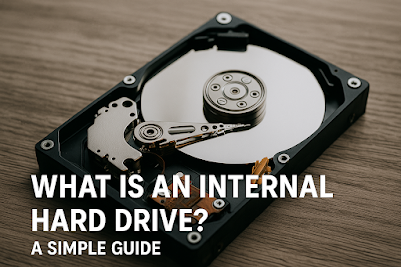The Evolution of PlayStation: A Look Back at Every Console Generation
Since its inception in 1994, PlayStation has become a dominant force in the world of gaming, revolutionizing interactive entertainment across decades. As we examine each PlayStation gaming console generation, we uncover not only technical advancements but also pivotal moments that reshaped the global gaming industry. Let’s journey through the complete legacy of PlayStation—one iconic console at a time.
PlayStation (PS1) – The Dawn of 3D Gaming
Launched in December 1994, the original PlayStation ushered in a new era of gaming with 3D graphics, CD-based media, and a library that became legendary.
Key Features:
32-bit RISC CPU
CD-ROM drive, enabling larger, more complex games
Memory Cards for save functionality
Classic titles: Final Fantasy VII, Metal Gear Solid, Resident Evil
The PS1 introduced cinematic storytelling and immersive worlds, setting the stage for modern gaming consoles to follow.
PlayStation 2 (PS2) – The Global Phenomenon
Released in 2000, the PlayStation 2 is the best-selling console of all time, with over 155 million units sold worldwide. It blended backward compatibility with DVD playback, making it more than just a gaming device.
Notable Innovations:
128-bit "Emotion Engine" processor
DVD playback, transforming it into a multimedia hub
Backward compatibility with PS1 games
Iconic titles: Shadow of the Colossus, God of War, Grand Theft Auto: San Andreas
The PS2 was a cultural juggernaut, making gaming mainstream and accessible to millions.
PlayStation 3 (PS3) – Power Meets Complexity
Sony's PlayStation 3, launched in 2006, took a bold leap forward with Blu-ray support, HD gaming, and online connectivity via the PlayStation Network.
Technical Highlights:
Cell Broadband Engine, powerful yet complex architecture
Blu-ray drive for high-capacity games and HD movies
PSN (PlayStation Network) with multiplayer and digital storefront
Support for HDMI and 1080p gaming
Standout games: The Last of Us, Uncharted 2, Demon’s Souls
Though its launch was rocky due to its price and development challenges, the PS3 became a staple gaming console with a strong library and multimedia features.
PlayStation 4 (PS4) – The Social Gaming Revolution
Launched in 2013, the PlayStation 4 redefined console gaming with a strong focus on developers, streaming, and social integration. Its streamlined architecture helped it reclaim the throne from its competitors.
Major Improvements:
AMD x86-64 architecture, making game development more accessible
8GB of GDDR5 RAM for faster processing and performance
Remote Play, SharePlay, and game streaming integration
VR support via PlayStation VR
Must-play titles: Horizon Zero Dawn, Spider-Man, Bloodborne
The PS4 became a powerhouse gaming console, selling over 117 million units, thanks to its robust lineup and user-friendly features.
PlayStation 5 (PS5) – The Next Generation of Speed and Immersion
Unveiled in November 2020, the PlayStation 5 is Sony's most powerful gaming console yet, delivering 4K gaming, ray tracing, and nearly instant load times via its custom NVMe SSD.
Cutting-Edge Features:
Custom 8-core AMD Zen 2 CPU and RDNA 2 GPU
825GB SSD with 5.5 GB/s data transfer speed
Ray tracing, haptic feedback, and adaptive triggers for immersion
DualSense Controller – revolutionizing tactile response
Exclusive games: Demon’s Souls Remake, Ratchet & Clank: Rift Apart, Returnal
The PS5 has set a new benchmark for what’s possible in home gaming, emphasizing fidelity, speed, and player immersion.
PlayStation Portable (PSP) and PlayStation Vita – Sony’s Mobile Ambitions
Sony also made waves in the handheld gaming market. While not traditional consoles, both the PSP and Vita expanded the PlayStation ecosystem beyond the living room.
PSP (2004):
First handheld with optical disc-based games (UMD)
Multimedia capabilities: music, movies, photos
Popular titles: God of War: Chains of Olympus, Crisis Core: Final Fantasy VII
PlayStation Vita (2011):
OLED display, dual analog sticks, rear touchpad
Seamless integration with PS4 via Remote Play
Cult favorites: Persona 4 Golden, Uncharted: Golden Abyss
Despite limited commercial success, both handhelds remain beloved among dedicated fans for their innovation and rich libraries.
The PlayStation Ecosystem – More Than Just Consoles
Each PlayStation gaming console generation has contributed to building a comprehensive ecosystem, offering users much more than gaming.
Key Components:
PlayStation Network (PSN) – Online multiplayer, digital downloads, and cloud saves
PlayStation Plus – Monthly games, exclusive discounts, and online access
PlayStation Store – A vast catalog of games, movies, and content
Remote Play & Cloud Streaming – Gaming beyond the console
This ecosystem continues to evolve, offering seamless experiences across consoles, mobile devices, and PCs.
The Legacy and Future of PlayStation
Over nearly three decades, PlayStation has become a synonym for console gaming excellence. With a focus on innovation, storytelling, and community, Sony has built a loyal global fanbase.
Looking ahead, we expect:
Cloud gaming expansion
Deeper VR integration via PlayStation VR2
AI-enhanced gameplay
More adaptive and personalized gaming experiences
Sony's dedication to pushing boundaries ensures that the PlayStation gaming console legacy will continue to thrive for generations to come.



Comments
Post a Comment